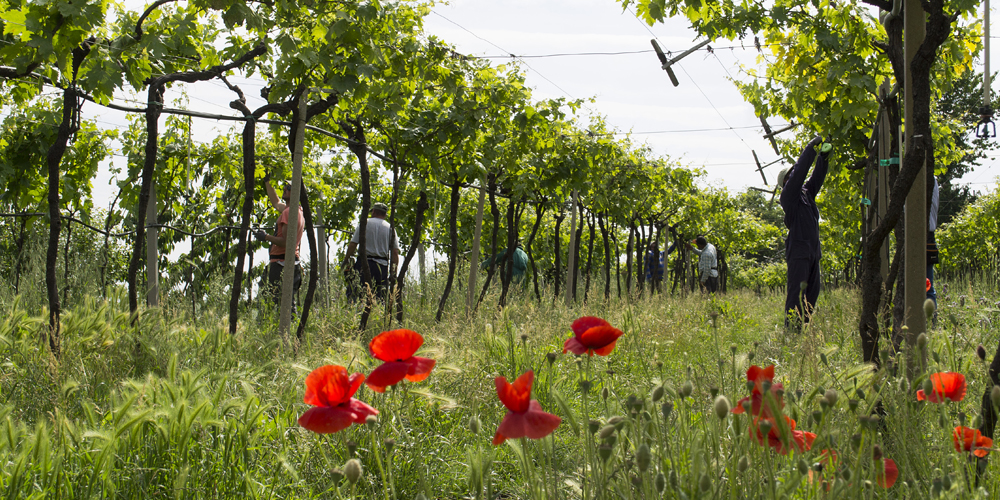Nature expresses itself spontaneously in the biodiversity of the forest as well as the jungle: these are complex systems in which a great variety of plants and insects are competing, and sometimes collaborating, for life. The taste of the fruit that grows within this type of environment is always more expressive, more exciting, more intense.
The terroir, defined as the set of elements that strongly characterizes a wine, is composed by a series of factors. The first and most important, is hidden below our feet in the soil. The second factor is certainly the climate: the way in which sun, rain and wind mark differences between the various years. The third is the contribution of the winemaker, who upon interpreting the two previous factors, pursues his ambition to create a great wine (see improvement link).
The ability to observe nature and to understand it in its deepest essence lies primarily in the acceptance of the fact that life itself is born and develops in the subsoil. The quality of the clays is important, but in nature, it is the complexity and mix of these clays that makes the difference.
In a great terroir, the roots go deep and lead to wines that explore the vertical complexity of the terrain. Organic viticulture, in addition
to ancient processing and hoeing, favor this wonderful process.
Stephane Derenoncourt surmises that, “a wine’s taste comes directly from the soil, the sub-soil, from a slope, the orientation of the land, a certain climate. and from all the subtle differences a piece of land possesses.”
Accordingly, we conduct careful analysis and partition of the vineyards according to the characteristics of the soils, and we study the different needs of those sectors.
The goal is to have decompacted, structured and balanced soil. These are soils that maintain their original characteristics, and ultimately, might provide the optimal conditions for the work of microorganisms and microflora therein.
Cultivating the vine means firstly understanding its nature, supporting its development, ensuring its vitality and longevity. On one side, there is the wild vigor of the plant, a liana that strenuously devotes itself to survival and reproduction. On the other hand there is the careful hand of the winemaker, who must know how to take this primitive instinct and bring it to excellence: interpreting the characteristics of the soil, the land and the variety, and working with passion and a maniacal attention to detail.
It is the sensitivity of the winemaker who, upon working together with the natural world in which the vines reside, along with his passion and maniacal care for detail, that enable to craft of wine-making — that process by which nature is enhanced into wine, an “art” since ancient times.

